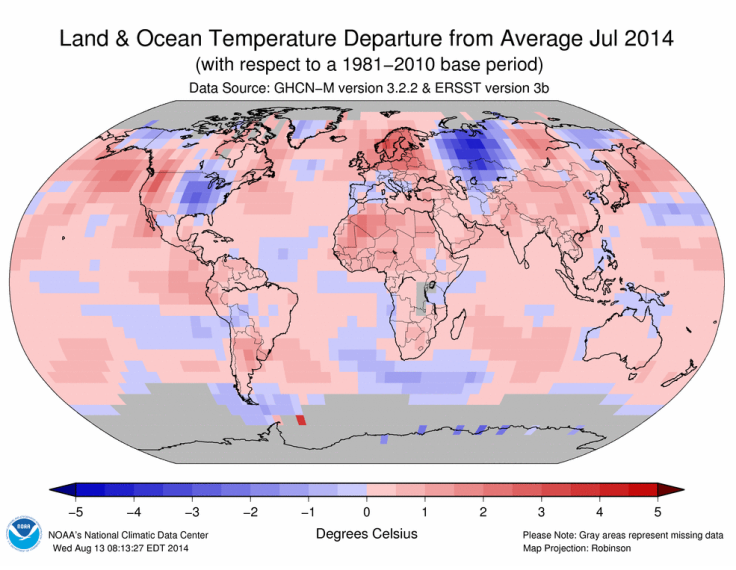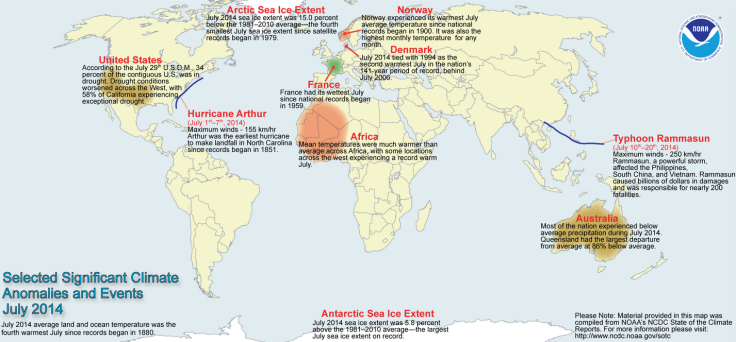Earth Had Its Fourth-Hottest July On Record; No Signs Of El Nino Just Yet: NOAA Temperature Data

Residents in the U.S.'s Northeast might not believe it, but the world experienced its fourth-hottest July on record last month, according to federal climate scientists. Average temperatures in May and June were both the hottest on record worldwide, despite the unusually cool weather that has blanketed parts of the United States this summer.
In July, average temperatures across the world’s land and ocean surfaces reached 1.15 degrees Fahrenheit above the 20th century average, NOAA's National Climatic Data Center said on Monday. Only the Julys of 2005, 2010 and 1998 were warmer, and eight of the 10 warmest Julys in history happened within the past decade, according to records dating back to the 1880s.

The Earth’s overall average temperature is rising as heat-trapping greenhouse gases build up in the atmosphere – the bulk of which come from human activities like burning coal and chopping down trees. Temperatures are likely to keep rising unless emissions are reined in, most scientists say.
According to the climate center, 32 countries across every continent – except Antarctica – reported at least one weather station with a record-high July temperature, and Norway had its hottest month ever on record.
The United States, however, experienced a mix of record warm and cold weather, a result of the unusual pattern in the North American jet stream. A significant “dip” in the air current this summer is pushing cool Arctic air down on the eastern half of the U.S. and causing hotter air to take over west of the Rocky Mountains. As a result, Indiana and Arkansas each had their coolest July in the 120-year period of record, while several Western states had one of their warmest Julys ever.
Out in the water, the average July temperature across the world’s ocean surfaces was 1.06 degrees higher than the 20th century average, tying with 2009 as the warmest on record for July. The data center said that “much-warmer-than-average and record warm temperatures were prevalent in every major ocean basin,” including the western equatorial Pacific Ocean.
El Niño conditions were largely absent out in the Pacific, the scientists said, as sea-surface temperatures cooled slightly compared with June. During an El Niño, warm water that pools near Asia and Australia is propelled toward the Americas by shifting winds and currents. The west-to-east commotion has the effect of raising the ocean’s overall sea-surface temperature, and a strong change is typically a key sign of an El Niño formation.
Earlier this month, the U.S. Climate Prediction Center lowered its expectations of an El Niño from 80 percent to 65 percent by the fall or early winter. El Niño’s final outcome could determine how cold and nasty the winter gets in the eastern U.S., experts told International Business Times, because it could undo the jet stream pattern that’s currently causing a cooler summer in some states.

© Copyright IBTimes 2024. All rights reserved.





















